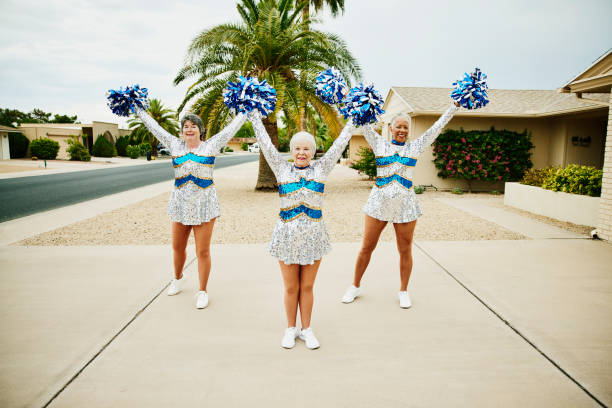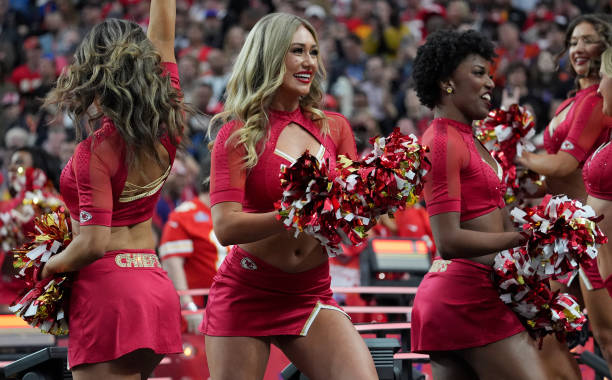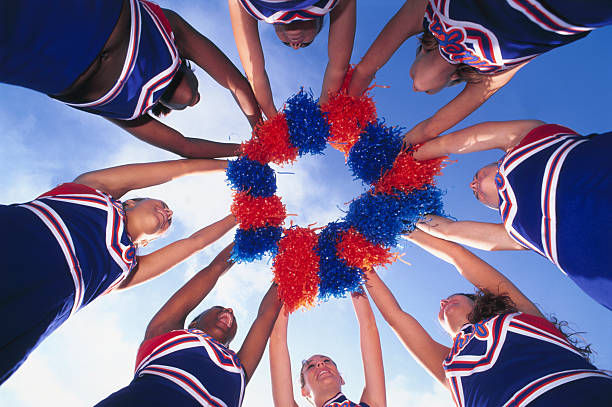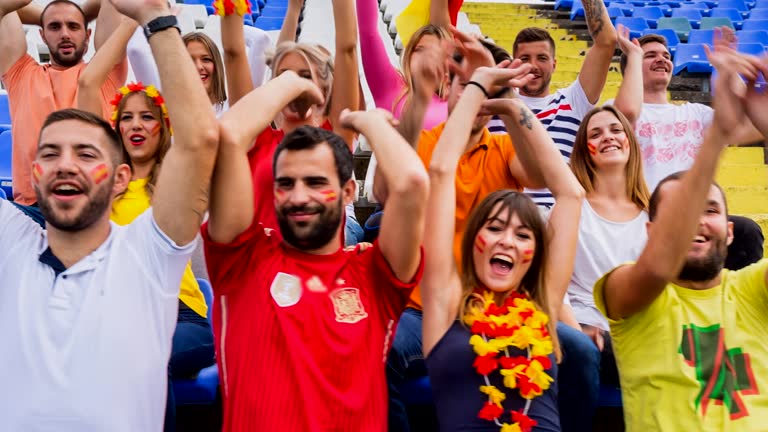What’s the first image that comes to mind when you think of cheerleaders? For everyone else, it’s likely a bevy of sprightly entertainers in coordinated costumes, pom-poms at the ready, egging on the audience at an American football or basketball game.
Cheerleaders are part of the fabric in some sports but what about soccer? What about cheerleaders in the world’s most popular sport?
The answer to this question is not so obvious as it may seem on the face of it and the exploration of this question leads to some really interesting discussions about differences, traditions and quirky things that sets soccer apart from other sports.
Let’s get the elephant in the room out of the way: there are no cheerleaders in soccer the way there are in American sports.
If you’ve ever sat in the stands of a soccer match, be it a local Fourth of July game or a World Cup final, you may have observed the thrilling atmosphere that crackles around it, but that there is no array of dancers on the sidelines pumping up the audience.
So, why is that?
And does that mean cheerleading and soccer have nothing in common? Let’s break it down.
The Role of Cheerleaders in Sports

Before we get into soccer more specifically, it’s important to understand what role cheerleaders serve in other sports. Cheerleaders are the norm in American football, basketball and even baseball.
They are meant to entertain the crowd, maintain energy and support the team. Their routines are usually a combination of dance, acrobatics and crowd interaction, and they’ve become synonymous with the spectacle behind these sports.
Cheerleading traces its origins to the late 19th century, when it was an all-male pastime at Ivy League universities. It gradually became the highly choreographed, female-dominated activity we’re familiar with now.
In American sports context, cheerleaders are an entertainment add-on — they are there to enrich the fan experience, especially during lulls in the action.
But soccer is an animal of another type. The structure of the game, its culture and how the fans are engaged are all unique, and that’s where the lack of cheerleaders begins to calcify.
CHECK OUT | Who Earn More Money: Soccer Players or Basketball Players?
Why Soccer Doesn’t Have Cheerleaders

The Flow of the Game
“Soccer is a free-flowing and okay very few stoppages. Unlike American football, which often has stoppages between plays, or basketball, which features timeouts or quarter breaks, soccer only has stoppages for halftime and mild injuries.
This steady stream leaves precious little need for extra entertainment during the game itself. The action on the pitch is enough to keep fans interested.
Fan Culture
Some of the most dedicated sports fanatics in the world can be found watching soccer. The don’t need cheerleaders to pump them up — an energy they bring with them.
From chanting and singing to waving flags and lighting flares, soccer supporters create an unparalleled atmosphere in sports.
So in many ways you know the fans are the cheerleaders. They’re deeply invested in the game, and their passion is organic as opposed to manufactured.
Global Differences
Soccer is a worldwide sport, with traditions that differ widely between countries.
In many parts of the world, the concept of cheerleaders would be foreign. In Europe and South America, for instance, soccer is intertwined with local culture and identity.
As an example of that, cheerleaders may be seen as unwanted or distracting from a sport that is known for its pure athleticism.
Focus on the Game
It has always been about the players, and about the game.
There’s a purity to it — 22 players, a ball, two goals. Adding cheerleaders might seem to detract from that simplicity. While so many American sports emphasize a spectacle, soccer’s appeal is its elegance and universality.
Exceptions to the Rule
Cheerleaders are not a feature in soccer, though, with some exceptions. Such cases are rare and usually related to a specific culture or marketing strategies.
Here are a few examples to consider:
- Women’s Soccer in America
In the U.S., where cheerleading is woven into the fabric of sports culture, soccer has seen its share of cheerleading on the sidelines at women’s games.
This is more frequent at college level, where cheerleading is a large part of the overall sports setup. Still, even in those cases, the cheerleaders are typically present to root on all the school’s teams, not just soccer.
- International Friendlies & Exhibitions
As for friendly matches, exhibition games and the like, sometimes organizers throw in some cheerleaders for good measure. This is less about actual competition and more about decorating for the holidays, and it’s not something you’d find at a typical league game.
- Non-Traditional Markets
In countries where soccer is not yet a dominant force, organizers might use cheerleaders as a gimmick to draw fans.
For instance, in certain regions of Asia, cheerleaders have been introduced to soccer games to provide an entertainment aspect.
But this is more of a novelty and hasn’t really taken off in a big way.
CHECK OUT | Why Do Soccer Players Walk Out with Children?
The role of mascots and entertainers
Although cheerleaders don’t exist in soccer, that doesn’t mean that there isn’t entertainment beyond the game itself.
Most soccer clubs have mascots — costumed characters who engage fans, especially children. These mascots usually make an appearance before the game starts or during halftime, contributing to a fun, family-oriented atmosphere.
Most of them also have entertainers such as drummers, flag carriers or even live bands to create an atmosphere. These performers are often linked to the club’s identity and traditions, making them a more homespun match than cheerleaders.
Should Soccer Have Cheerleaders?

That’s where things get a little spicy.
Cheerleaders do not come from soccer’s traditional culture, but there’s an ongoing debate about whether they could or should be introduced. They were right to look into both sides of the story.
Arguments For Cheerleaders in Soccer
- Enhanced Entertainment
Some believe that cheerleaders would provide casual fans with a bit more excitement in soccer games. They might play at halftime or pregame, and just add to the experience of going out to a baseball game.
- Attracting New Fans
In markets where soccer must still find its feet, cheerleaders could help attract audiences. They could help the sport by making it more accessible and attractive to people accustomed to the spectacle of American sports.
- Commercial Opportunities
Cheerleaders could create new revenue opportunities for clubs. There’s possibility for financial profit from merchandise to sponsorships.
Arguments Against Cheerleaders in Soccer
- Cultural Misalignment
Soccer fans are fiercely protective of the game’s traditions. Introducing cheerleaders could also be viewed as unwanted Americanization and risk alienating long-serving fans.
- Distraction from the Game
Many supporters feel soccer should be about the players and the game itself. Bringing in cheerleaders might take away from that focus.
- Logistical Challenges
The nonstop flow of soccer and the absence of stoppages at commercial breaks have made it hard to integrate cheerleaders in any meaningful way.
They’d have fewer chances to perform — and given that, their appearance could feel like a sideshow.
CHECK OUT | Can You Play Soccer With Glasses?
What Soccer Does Instead

If cheerleaders are not in soccer’s DNA, what does the sport do to keep the atmosphere lively?
The answer is in the fans themselves. Soccer fans have a reputation for being artistic, passionate, and dedicated.
Here are some of the ways they help create the game’s signature vibe:
- Chants and Songs
Each club has its own collection of chants and songs, usually handed down from generation to generation. These aren’t just arbitrary cheers — they are a core component of the club’s identity.
These are chanted by fans throughout the match, fostering a sense of community and inclusion.
- Tifos and Banners
Prior to big matches, fans often display giant tifos (big displays) or banners to show solidarity. These are typically works of art, depicting club imagery, slogans or motivational phrases.
- Drumming and Instruments
At many stadiums, drums, trumpets or other instruments play to improve the atmosphere. These aren’t professional entertainers — they’re fans who bring their own instruments to the game.
- Pyrotechnics
Flares and smoke bombs, while sometimes illegal, are a staple of the atmosphere at soccer matches, particularly across Europe and South America.
They lend the experience a dramatic, nearly theatrical quality.



